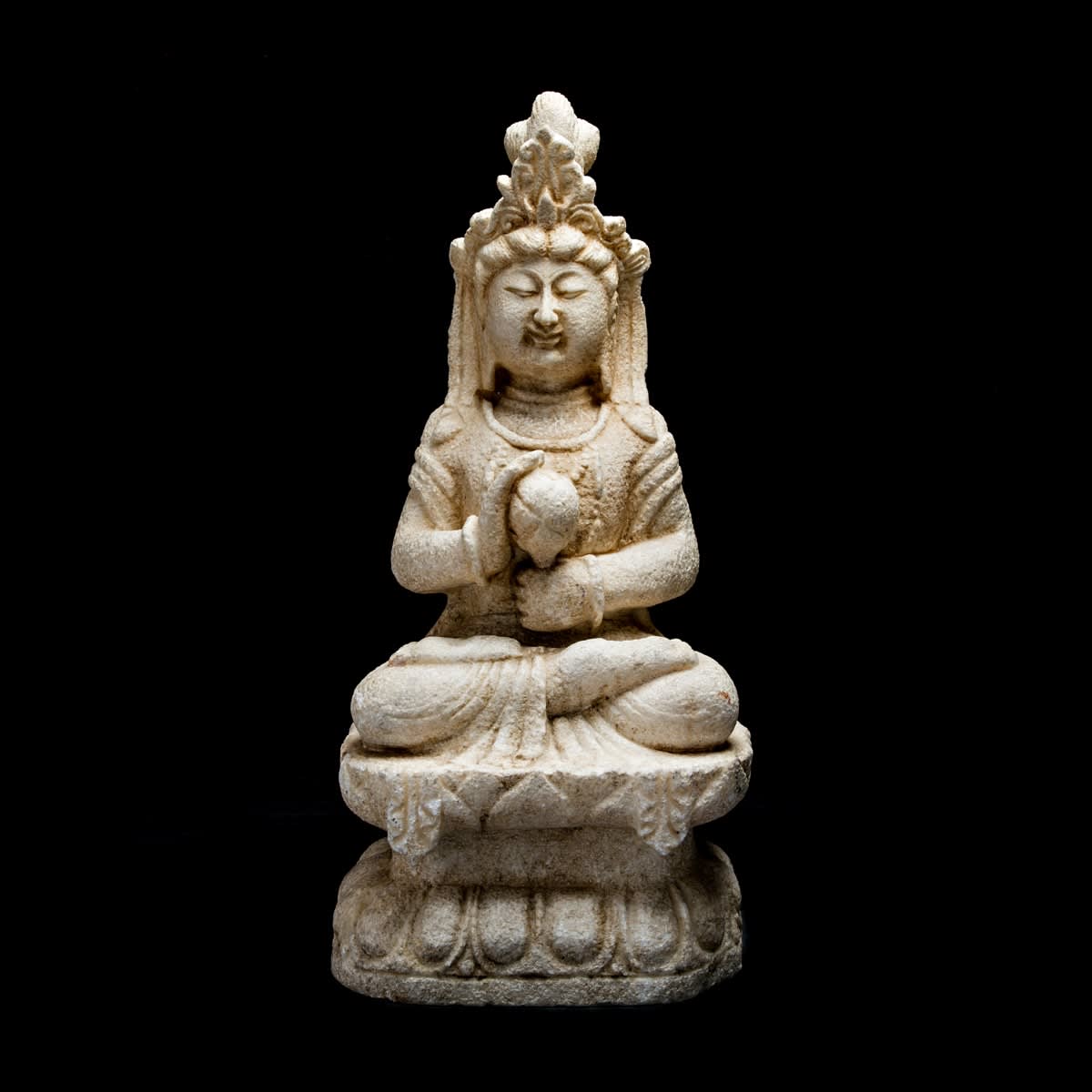Qing Marble Guanyin, 1644 AD to 1912 AD
Marble
height 76.2 cm
height 30 in
height 30 in
PH.0236
Further images
The Qing dynasty was the last imperial dynasty in China. It was founded by the non-Chinese people of the Manchus who originally lived in the northeast, a region later called...
The Qing dynasty was the last imperial dynasty in China. It was founded by the non-Chinese people of the Manchus who originally lived in the northeast, a region later called Manchuria. The Manchus used the disintegration of the central government of the Ming empire to conquer China. They established a political system that successfully integrated the Chinese intellectuals into the administration of the empire. The Manchu people were organized militarily in the Eight Banners and lived in “Manchu cities” in Beijing and most provincial capitals.
This Qing dynasty piece depicts a guanyin. Guanyin is an East Asian bodhisattva associated with compassion as venerated by Mahayana Buddhists. She is commonly known as the “Goddess of Mercy” in English. The name Guanyin is short for Guanshiyin, meaning “[The One Who] Perceives the Sounds of the World”. Some Buddhists believe that when one of their adherents departs from this world, they are placed by Guanyin in the heart of a lotus, and then sent to the western pure land of Sukhavati. Guanyin is beloved by all Buddhist traditions in a non-denominational way and can be found in some of the most important centers of Indian Buddhism including the Mahabodhi Temple, Ajanta Caves and Nalanda Museum as well as most Tibetan temples where it is referred to as Chenrezig. Furthermore, Guanyin can also be found in some influential Theravada temples such as Gangaramaya and Kelaniya of Sri Lanka as well as the Asian art sections of most museums in the world as a widely depicted subject of Asian art and sculpture. It is generally accepted among East Asian adherents that Guanyin originated as the Bodhisattva Avalokitesvara. Commonly known in English as the Goddess of Mercy but often depicted as both male and female to show this figure’s limitless transcendence beyond gender.
This Qing dynasty piece depicts a guanyin. Guanyin is an East Asian bodhisattva associated with compassion as venerated by Mahayana Buddhists. She is commonly known as the “Goddess of Mercy” in English. The name Guanyin is short for Guanshiyin, meaning “[The One Who] Perceives the Sounds of the World”. Some Buddhists believe that when one of their adherents departs from this world, they are placed by Guanyin in the heart of a lotus, and then sent to the western pure land of Sukhavati. Guanyin is beloved by all Buddhist traditions in a non-denominational way and can be found in some of the most important centers of Indian Buddhism including the Mahabodhi Temple, Ajanta Caves and Nalanda Museum as well as most Tibetan temples where it is referred to as Chenrezig. Furthermore, Guanyin can also be found in some influential Theravada temples such as Gangaramaya and Kelaniya of Sri Lanka as well as the Asian art sections of most museums in the world as a widely depicted subject of Asian art and sculpture. It is generally accepted among East Asian adherents that Guanyin originated as the Bodhisattva Avalokitesvara. Commonly known in English as the Goddess of Mercy but often depicted as both male and female to show this figure’s limitless transcendence beyond gender.











